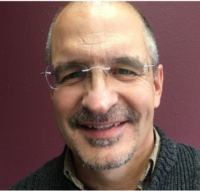Every year the public school where I teach takes a small group of high school girls to the University of Idaho’s annual Women In Engineering Day workshop. Here, these female students in grades 11 and 12 are given the opportunity to explore different post-secondary “career options in engineering and computer science.” Bravo. I salute and promote any opportunity to encourage my students to start setting their sights on a potential career. My only question: why can’t our male students attend? In fact, by not allowing male students to attend this event, these students are being denied an equal opportunity to discover a career in the sciences or engineering. It’s not like they’re born knowing this stuff … because they’re boys.

I have two problems with this gender-specific science and engineering career exhibit. First, it is making the assumption that girls in Idaho public schools are somehow denied equal access to science and engineering coursework; or, perhaps more pertinently, somehow led to believe that science, engineering, or information-science careers are only for the boys. This is certainly not true at the school where I am employed, nor any other public school that I’m familiar with. Perhaps this was true back in the 1970s, but not today. Our school’s science teacher (in fact, our school’s science department) is a woman. She is a former wildlife biologist with the Idaho State Department of Fish and Game and has come into teaching as a second career. She teaches all of our science courses: from physical science, to biology, to chemistry, and more. And she serves as a role-model in science for all of her students, both girls and boys.
Second, this University of Idaho program seems to make the assumption that only women can serve as mentors and role models for female students, as the presenters at the University of Idaho’s career exhibit are only women. Really? That is not in my experience as both a student and as a teacher. My advisor for the master’s degree in history that I earned at the University of Idaho was a woman. And I continue to hold her in the highest regard. In addition, I have been twice honored to receive the NISTAR award. The NISTAR award is the North Idaho Student-Teacher Recognition award given to high school teachers who are selected by the region’s valedictorians and salutatorians as being the most influential teachers in their high school education. I’ve been picked twice, and in both instances the students selecting me were female. I, a man, had influenced the career and post-secondary education choices of two of my most academically successful students. This encourages me. The fact that they were young women and I am a man is of no consequence. At least, they didn’t think so. To this day I keep in contact with both of them. And I am proud of them.
The University of Idaho needs to broaden its outreach and welcome all students to their science and engineering career expo. A good model to follow is that of North Idaho College. The college hosts an annual career and education exploration exhibit called the Career-Technical Education Road Show. This interactive mobile exhibit visits area schools and introduces students — all students — to the world of STEM-related careers. To encourage female students in these career possibilities, there is also a special booth called “Women At Work,” where women in these science and technical fields share their experiences with female students. This is a better and more equitable model.
I am especially receptive to engaging “hands-on” learning opportunities for students to explore potential careers, and then give them guidance about the steps needed to achieve those careers. But, should these opportunities be limited to students of a specific gender? No, we need to move away from limiting student opportunities based on assumptions drawn from decades earlier. It is time for the University of Idaho to move into the 21st century.
Written by social studies teacher Mike Turnlund. He has taught at Clark Fork Jr/Sr High School for 12 years and can be contacted at [email protected].
